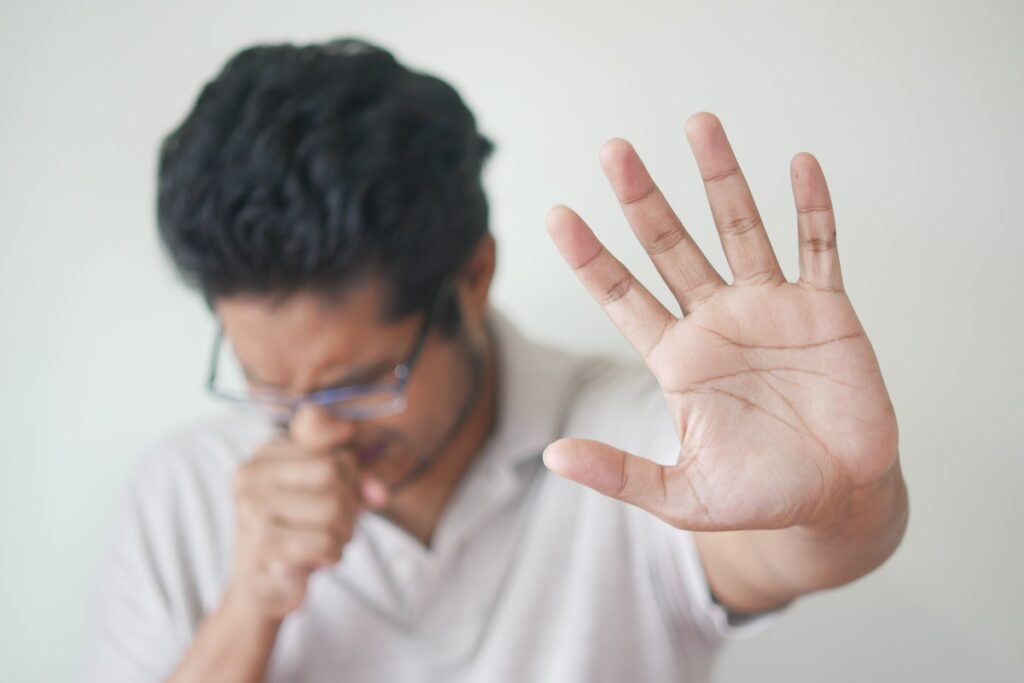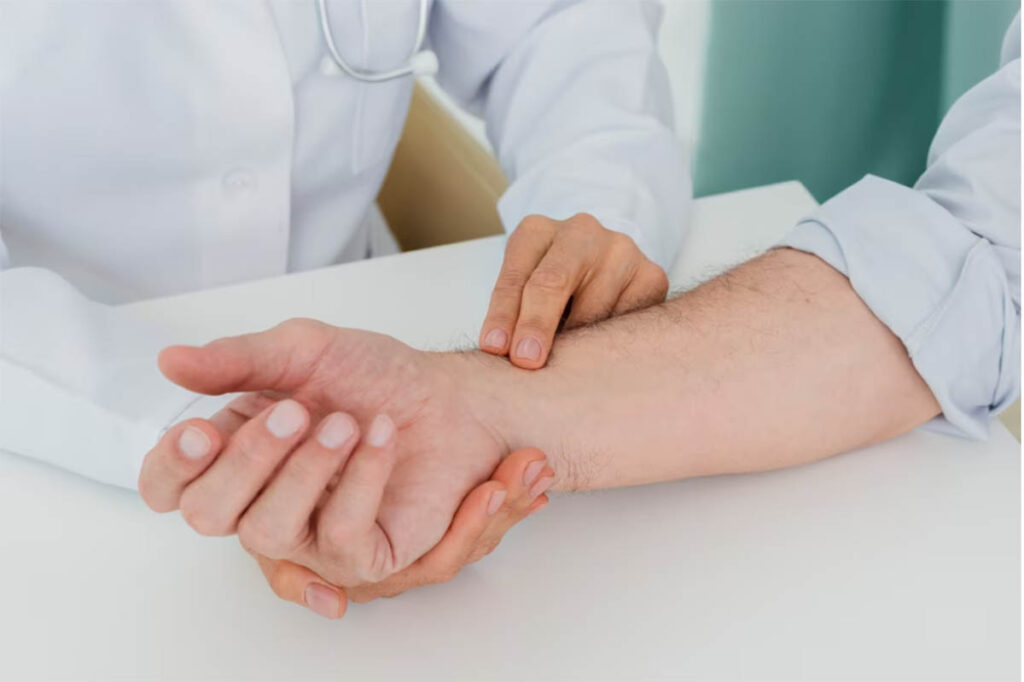Introduction
Pain in the palm of the hand can be a distressing and disruptive condition that affects daily activities and quality of life. The palm is a vital part of the hand, responsible for gripping, holding, and performing various intricate tasks. Pain in this area can result from numerous factors, ranging from overuse and injuries to underlying medical conditions. In this comprehensive 3000-word article, we will delve into the causes, symptoms, diagnosis, treatment options, and preventive measures for pain in the palm of the hand.
Section 1: Anatomy of the Palm
Understanding the anatomy of the palm is essential to comprehend the sources of pain. The palm consists of soft tissues, tendons, ligaments, nerves, and blood vessels, all of which work together to enable hand function and sensation. The palm is also home to the thenar and hypothenar muscles, which control thumb and pinky finger movements, respectively.
Section 2: Common Causes of Pain in the Palm
Pain in the palm can result from various factors, including:
- Overuse Injuries: Repetitive and excessive use of the hand and fingers, such as in typing or gripping activities, can lead to strain and inflammation in the palm.
- Carpal Tunnel Syndrome: Compression of the median nerve as it passes through the carpal tunnel can cause pain and numbness in the palm and fingers.
- Trigger Finger: A condition where the flexor tendons in the palm become inflamed and cause the finger to lock or “catch” when bent.
- De Quervain’s Tenosynovitis: Inflammation of the tendons in the thumb side of the wrist, causing pain in the palm and wrist.
- Ganglion Cysts: Non-cancerous, fluid-filled cysts that can develop on tendons or joints in the hand, leading to pain in the palm.
- Arthritis: Inflammatory conditions such as rheumatoid arthritis or osteoarthritis can cause pain and stiffness in the palm and hand joints.
- Fractures or Injuries: Trauma or direct impact to the hand can result in fractures or injuries to the palm bones, causing pain and swelling.
- Nerve Entrapment: Compression or irritation of nerves in the palm can cause localized pain and tingling.
Section 3: Symptoms of Pain in the Palm

Pain in the palm of the hand can manifest with various symptoms, depending on the underlying cause and severity. Common symptoms include:
- Localized Pain: Pain that is confined to the palm area and may worsen with movement or gripping.
- Swelling: Visible or palpable swelling in the palm due to inflammation or injury.
- Numbness or Tingling: Sensation of numbness or tingling in the palm or fingers, particularly in nerve-related conditions.
- Stiffness: Difficulty moving the fingers or palm due to pain or inflammation.
- Weakness: Reduced grip strength and difficulty holding objects or performing fine motor tasks.
Section 4: Diagnosis of Pain in the Palm
Accurate diagnosis is crucial for determining the underlying cause of pain in the palm and guiding appropriate treatment. The following methods are commonly used for diagnosis:
- Medical History: The healthcare provider will inquire about the patient’s symptoms, medical history, and any recent injuries or activities that may have contributed to the pain in the palm.
- Physical Examination: A thorough examination of the hand, including the palm and fingers, assessing range of motion, tenderness, swelling, and signs of inflammation.
- Imaging Studies: X-rays, MRI, or ultrasound may be conducted to visualize the hand’s internal structures and detect any abnormalities, fractures, or cysts.
- Nerve Conduction Studies: Electromyography (EMG) and nerve conduction studies (NCS) may be used to assess nerve function and identify nerve entrapment or compression.
Section 5: Treatment Options for Pain in the Palm
Treatment for pain in the palm depends on the underlying cause, the severity of the condition, and the patient’s overall health. Common treatment options include:
- Rest and Immobilization: Resting the hand and avoiding activities that worsen pain can promote healing and prevent further strain.
- Ice and Heat Therapy: Applying ice packs or warm compresses can help reduce inflammation and alleviate pain in the palm.
- Pain Medication: Over-the-counter pain relievers, such as acetaminophen or nonsteroidal anti-inflammatory drugs (NSAIDs), can provide short-term relief from pain and inflammation.
- Hand Exercises: Gentle exercises and stretches can help improve hand and finger mobility, reduce stiffness, and strengthen the muscles.
- Splinting: Wearing a splint or brace can provide support and immobilize the hand to promote healing in certain conditions.
- Corticosteroid Injections: Injections of corticosteroids into the affected area can help reduce inflammation and alleviate pain.
- Hand Therapy: Working with a hand therapist can provide targeted exercises and techniques to improve hand function and reduce pain.
- Surgical Intervention: In cases of severe injuries, nerve compression, or cysts, surgical procedures may be necessary to address the underlying issue and alleviate pain.
Section 6: Preventive Measures for Pain in the Palm

While some causes of pain in the palm may not be preventable, several lifestyle choices and precautions can help reduce the risk of developing hand pain:
- Ergonomic Workstation: Maintain a properly adjusted workstation to reduce strain on the hands and wrists during typing or computer work.
- Take Breaks: Take frequent breaks during repetitive activities to give the hands and palms time to rest and recover.
- Use Proper Technique: Practice proper hand and wrist positioning during activities that involve gripping or repetitive movements.
- Strengthen Hand Muscles: Engage in hand exercises and grip-strengthening activities to build hand and finger strength and flexibility.
- Avoid Overexertion: Avoid overusing the hands and palms during physical activities or sports that involve repetitive hand movements.
- Support the Hand: Use wrist supports or ergonomic gloves during activities that require repetitive hand motions.
Section 7: When to Seek Medical Attention
Pain in the palm of the hand should be promptly evaluated by a healthcare provider, especially if it is severe, persistent, or accompanied by other concerning symptoms.
- Seek medical attention if the pain is interfering with daily activities or impacting hand function.
- Consult a healthcare provider if there is swelling, numbness, or tingling in the hand, as these may indicate nerve or vascular issues.
Conclusion
Pain in the palm of the hand can be a bothersome and uncomfortable condition, affecting hand function and quality of life. By understanding the causes, symptoms, and preventive measures for hand pain, individuals can take proactive steps to protect their hand health and reduce the risk of developing chronic discomfort. It is crucial to seek medical attention for persistent or severe hand pain to determine the underlying cause and receive appropriate treatment. Implementing preventive measures, maintaining proper hand hygiene, and adopting healthy hand habits can promote a pain-free and functional palm, supporting overall hand health and well-being. Remember that each person’s situation is unique, and tailored treatment and preventive strategies may be necessary for effective pain management and hand care.



